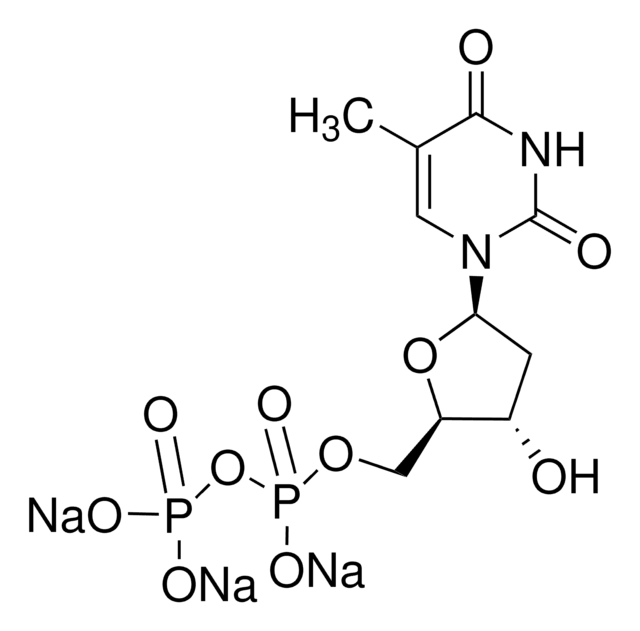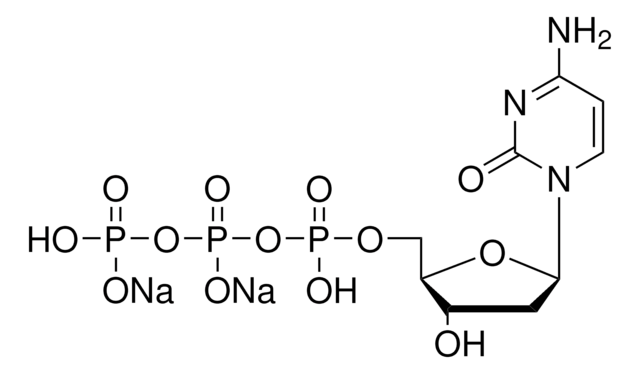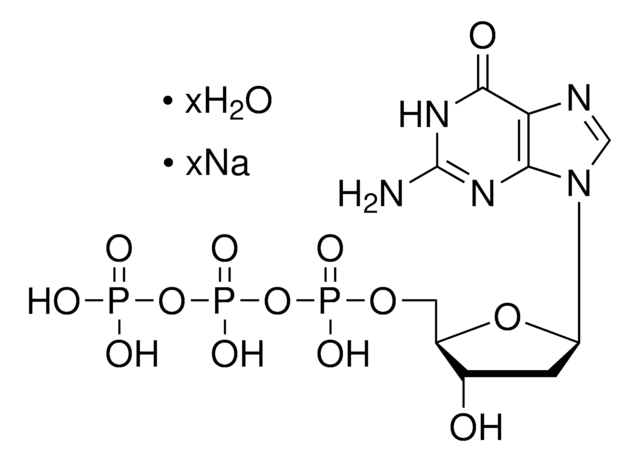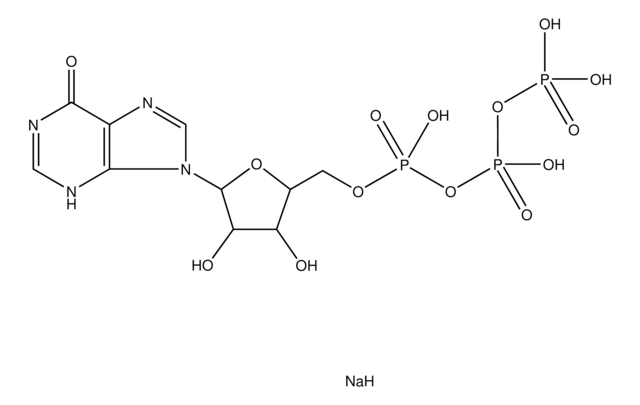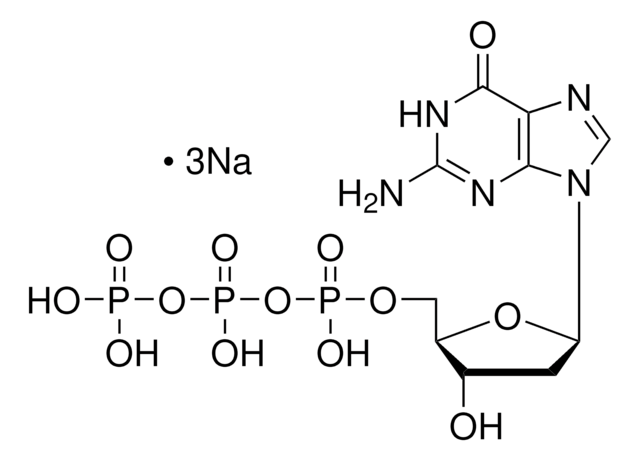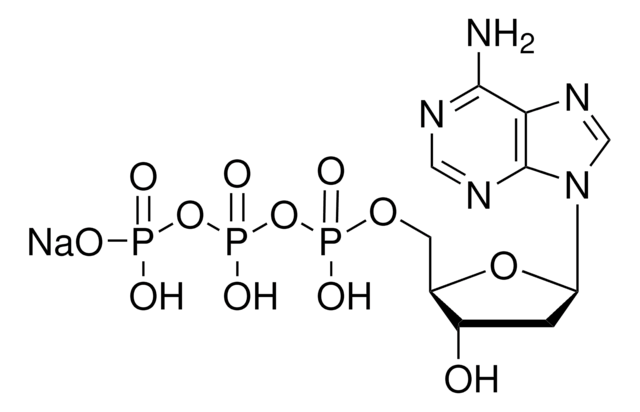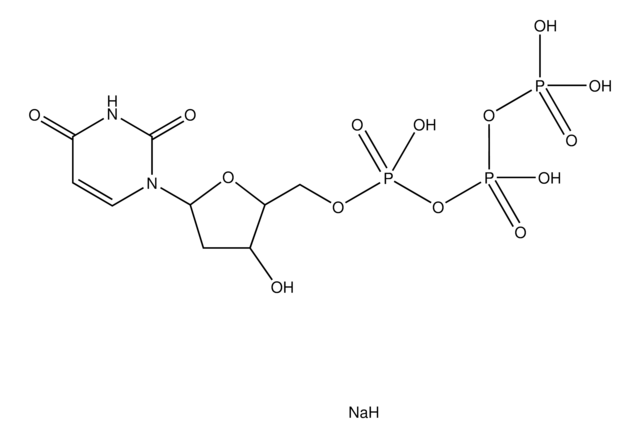T0251
Thymidine 5′-triphosphate sodium salt
≥96%
Synonyme(s) :
TTP, dTTP
About This Item
Produits recommandés
Niveau de qualité
Pureté
≥96%
Conditions d'expédition
dry ice
Température de stockage
−20°C
InChI
1S/C10H17N2O14P3.Na.H/c1-5-3-12(10(15)11-9(5)14)8-2-6(13)7(24-8)4-23-28(19,20)26-29(21,22)25-27(16,17)18;;/h3,6-8,13H,2,4H2,1H3,(H,19,20)(H,21,22)(H,11,14,15)(H2,16,17,18);;
Clé InChI
KAELIXTVSANDSE-UHFFFAOYSA-N
Vous recherchez des produits similaires ? Visite Guide de comparaison des produits
Application
- in the quenching ability test for dual-aptamer and multiple-nucleotide detection based on a multiple-aptamer/GO-nS complex
- to study protein-metabolite interactions in the central metabolism of Escherichia coli
- in a polymerase chain reaction (PCR) product formation using AM-toxin primers
Actions biochimiques/physiologiques
Code de la classe de stockage
11 - Combustible Solids
Classe de danger pour l'eau (WGK)
WGK 3
Point d'éclair (°F)
Not applicable
Point d'éclair (°C)
Not applicable
Certificats d'analyse (COA)
Recherchez un Certificats d'analyse (COA) en saisissant le numéro de lot du produit. Les numéros de lot figurent sur l'étiquette du produit après les mots "Lot" ou "Batch".
Déjà en possession de ce produit ?
Retrouvez la documentation relative aux produits que vous avez récemment achetés dans la Bibliothèque de documents.
Les clients ont également consulté
Notre équipe de scientifiques dispose d'une expérience dans tous les secteurs de la recherche, notamment en sciences de la vie, science des matériaux, synthèse chimique, chromatographie, analyse et dans de nombreux autres domaines..
Contacter notre Service technique